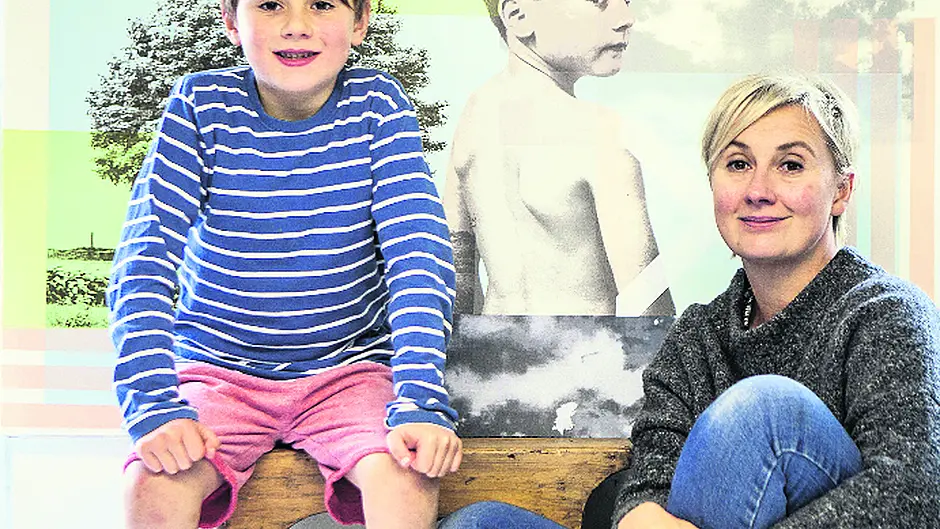A Macroom artist’s new show is reflecting the grief she felt when her brother Andrew died of suicide in 2003
A Macroom artist’s new show is reflecting the grief she felt when her brother Andrew died of suicide in 2003
WEST Cork-based artist Debbie Godsell’s new exhibition of prints, The Infinite Whatever, reflect the long process of grieving that followed the suicide of Godsell’s brother Andrew in 2003, an event that left her family devastated.
Most of the works in the exhibit feature Godsell’s young son Milo, along with images of the landscape around her home in Macroom.
‘After Andrew’s death,’ says Godsell, ‘my family and I uprooted from Cork and moved to the countryside outside Macroom. I’d always been a city girl, and my work had mostly been about identity. I’d never been particularly interested in the landscape, but when I started walking the roads around my home, I became intrigued by how certain elements began to resonate with me.’
On her walking circuit, there was one particular outcrop of trees that seemed to represent how she was feeling emotionally. ‘I came across the term “thin places” in my reading. If you’re religious, you might think of it as where heaven and earth meet. If you were scientific, you might attribute it to electro magnetic energies. But that’s how the work in this series began.’
The Infinite Whatever is a term coined by the New York Times travel writer Eric Weiner to describe those “thin places”, where ‘the distance between heaven and earth collapses and we glimpse the divine, transcendent, or the infinite whatever.’
For Godsell, these are the places ‘where a person may experience a rare sense of well-being or briefly connect with their essential self. I’ve returned again and again to that outcrop of trees, photographing it through the seasons. It’s almost a template now.’
She adds: ‘You know that saying; places remember events. For me, walking through the landscape, I had the sense that I was beginning to heal.’
At first, Godsell was wary of using her son’s image in her work. ‘But I needed to push it beyond landscape. Over the past ten years, my work has mostly been about overcoming grief. The work was very dark for a long time; there were pieces called Haunted and Winter. This new work is more hopeful; it’s like the end of the grieving process.
‘I couldn’t use the image of a child before. But I could now, and I suppose that was because I was thinking of a mother’s loss. I also wanted the child to be an icon of vulnerability. They look very Christ-like, these images, but that was not something I noticed until I’d finished making them.’
Milo loved the experience of being a model. ‘He understood the process. I wanted neutral expressions, and asked him to look away from the camera instead of meeting the viewer’s eye. A lot of the time, we’d walk together and talk about the energy we’d feel in different places. He was very engaged with the whole process, and I think that’s why it’s worked so well.’
Godsell combined the photographs she had taken of Milo with those of the landscape using the silkscreen process of printmaking. ‘The work goes through five or six stages. I don’t make editions, as printmakers usually do, so each piece is unique. And they’re very big, about 120 x 100 cm.’
Godsell’s older work, made in the wake of her brother’s death, had mostly to do with “the liminal”, the idea that there are “inbetween place”.
‘I had read about suicides being buried at crossroads, or at the tops of mountains where they meet the sky. Places that were no-man’s-land,’ she recalls. The artist now lectures full-time in the art department at Coláiste Stiofáin Naofa in Ballyphehane, where she is course director for the Level 6 Certificate in Art.
Recently Godsell has been making work that has to do with the landscape at a global level. ‘I’ve been thinking a lot about the Calais jungle camps. I don’t really know where it’s going yet, but I want to use Milo as a model again while he’s still small. And I want to use the landscape more often in my work. I’m only sorry I didn’t come to the countryside sooner. There’s so many layers to the landscape; now I can’t imagine not making use of it.’








